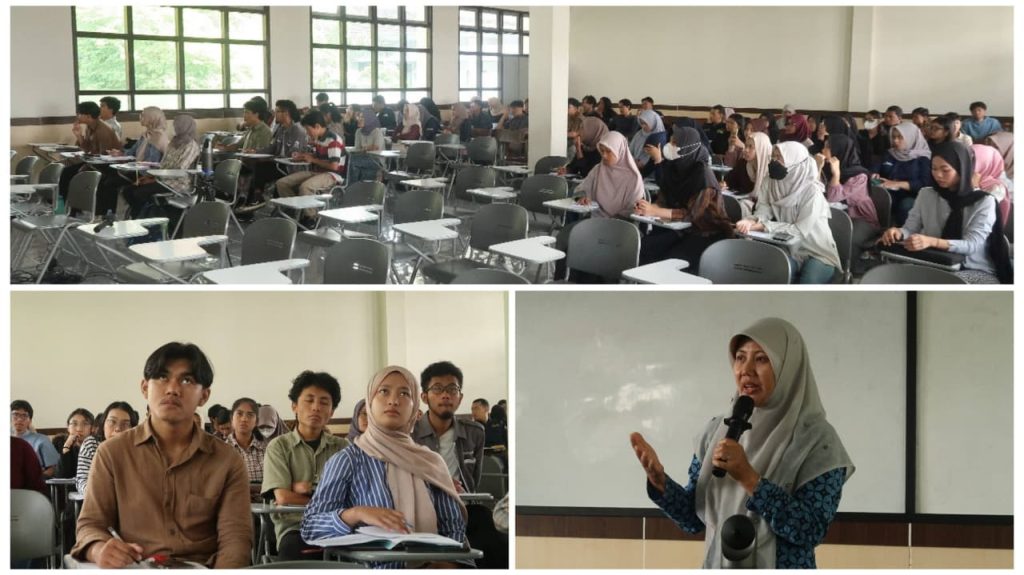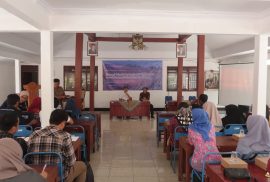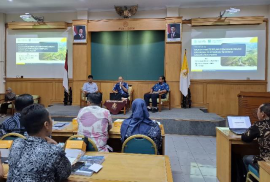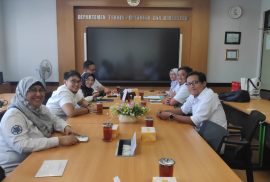
Yogyakarta, October 22, 2025 — The growing global population continues to pose a major challenge for the agricultural sector to increase productivity and meet the rising demand for food. However, excessive agricultural practices and soil tillage can lead to land degradation and reduced soil quality for future cropping seasons.
In response to this issue, the Department of Agricultural and Biosystems Engineering (DTPB), Faculty of Agricultural Technology, Universitas Gadjah Mada (UGM), equipped students with new insights through a guest lecture featuring Dr. Orracha Sae-Tun from the Faculty of Forestry, Kasetsart University, Thailand. The lecture, attended by students of the Undergraduate Program in Agricultural Engineering, focused on the course Fundamentals of Soil Physics and was moderated by Dr. Ngadisih, with lecturers Dr. Rizki Maftukhah and Dr. Muhamad Khoiru Zaki also present.
The Role of Soil in Achieving Sustainable Development Goals
In her lecture titled “Tillage Practices and Their Impacts on Soil Carbon Dynamics”, Dr. Orracha highlighted the strong linkage between soil management and the United Nations Sustainable Development Goals (SDGs). She explained that agricultural soils directly support at least five SDGs — SDG 2 (Zero Hunger), SDG 3 (Good Health and Well-Being), SDG 6 (Clean Water and Sanitation), SDG 13 (Climate Action), SDG 15 (Life on Land), and SDG 12 (Responsible Consumption and Production).
“Soil plays a vital role in food provision, water filtration, climate change mitigation, and sustaining terrestrial ecosystems. The higher the organic carbon content, the healthier the soil,” she noted.

From Conventional Tillage to Conservation
Dr. Orracha explained that tillage is a crucial part of agricultural land management. Traditionally, tillage aims to prepare planting areas, improve soil structure, and manage crop residues. However, overly intensive tillage can cause soil erosion, nutrient loss, and increased greenhouse gas emissions.
To overcome these challenges, researchers have developed conservation tillage approaches that effectively reduce soil and water loss while improving carbon utilization efficiency.
Long-Term Study Results in Austria
Dr. Orracha shared findings from a long-term research project conducted in Austria since 2006, comparing four tillage systems — conventional, reduced, minimum, and no tillage — and their effects on soil carbon dynamics.
“The research revealed that the lower the tillage intensity, the higher the soil carbon stock. However, the best results were found under reduced and minimum tillage systems, not under no-tillage,” she explained.
She further elaborated that in no-tillage systems, crop residues accumulate on the surface, making it difficult for soil microorganisms to access nutrients. Thus, moderate tillage intensity helps maintain soil biological activity and organic carbon availability.
Maintaining Soil Health for Sustainable Agriculture
As a closing note, Dr. Orracha emphasized that soil carbon consists of two main forms — organic and inorganic — with organic carbon playing a greater role in maintaining soil health and productivity. Implementing conservation tillage can be a strategic solution to enhance organic carbon content while mitigating climate change.
“We need to consider the interactions among soil chemical, physical, and biological properties, as they are interconnected in determining carbon dynamics,” she concluded.
This guest lecture served as an important learning opportunity for students to understand the relationship between soil management and environmental sustainability — in line with FTP UGM’s commitment to supporting SDG 2, SDG 6, SDG 13, and SDG 15 through education, research, and innovation in biosystems and agricultural environmental technology.




